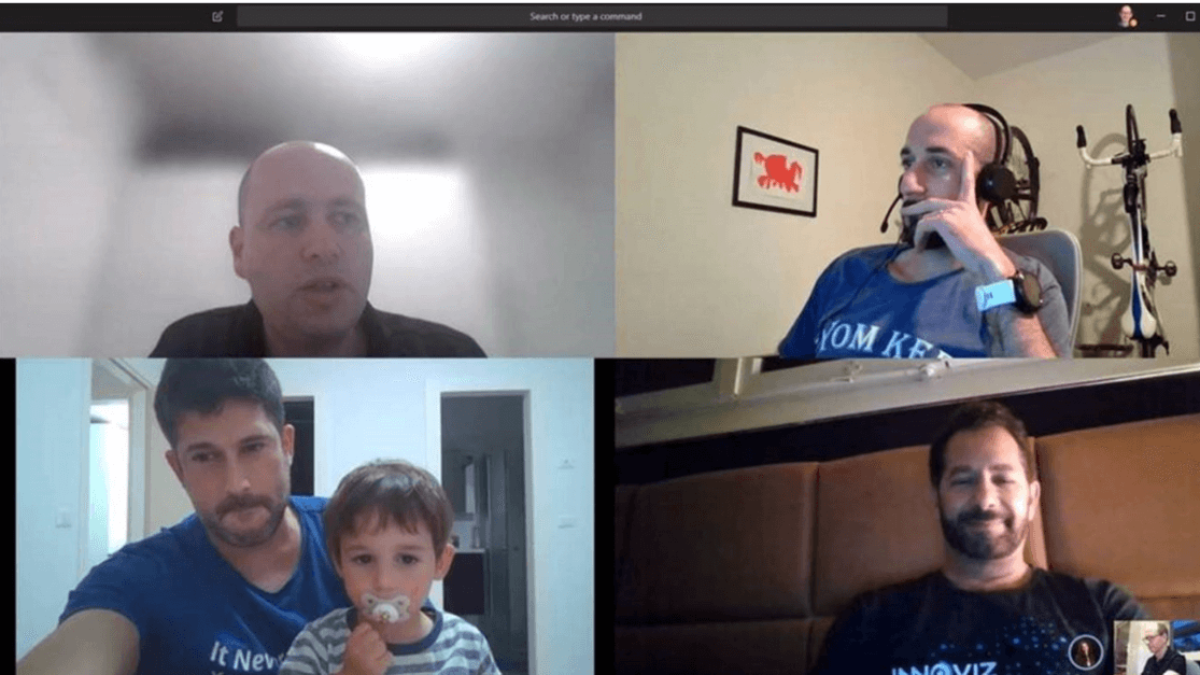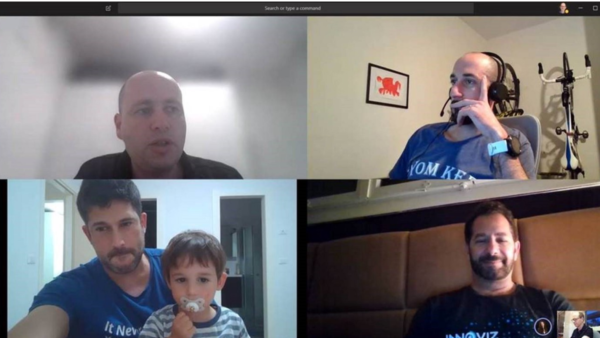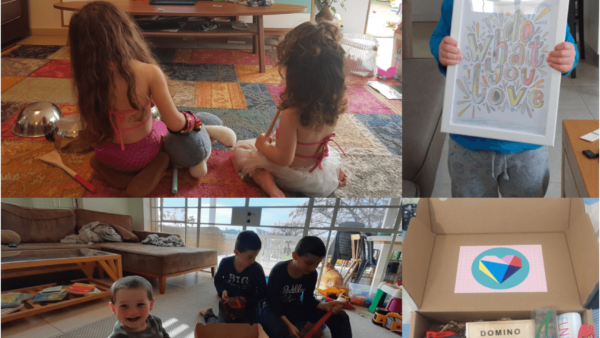
Introduction
Over the past few months, businesses around the world have seen unprecedented restrictions on how and where they can operate, and many employees have had to adjust to doing their jobs from home while also juggling childcare. At Innoviz, we’re not immune to these global impacts and have been fortunate to have as-close-to-business as usual-as-possible during these corona days. We have found new ways of collaborating on project development, meeting our customer needs and working amid increasing restrictions. Some of these new ways of working, I believe, will serve us in the long term when everything goes back to normal.
The beginning
When the news about COVID-19 first started, Innoviz’s offices, conference rooms and public areas were equipped with hand sanitizers, in addition to an increase in the daily cleaning routines around the office space. Then, as of the middle of March 2020, the Israeli government took a number of measures for dealing with the spread of the virus and closed down schools and daycares. Since then, Innoviz adopted a ‘working from home’ policy, with only about 30 percent of employees arriving at the office. As much as this helped all of the parents who now had to stay home for their children, it had become obvious that more structured ways for delivering on our ongoing projects were needed, and new working methods had to be adopted.
Now, it feels as if it were ages ago that the ‘old’ Innoviz ways of working were around. In our new routine, random and frequent meetings next to the coffee machine were replaced with structured visits, and going to the lab to “check something out” was replaced with pre-organized and authorized visits for those employees who were allowed into the office. For a multi-site company with 300 employees with a super complex product, communication and coherency had to be altered. After all, our customers around the world expected progress on our projects, even during these unusual times.
Communication became even more important
The first to feel the changes were management members such as myself. Our weekly management meeting changed to a daily, early morning virtual one, where we discussed daily targets, and each member took ownership over making their team’s daily, weekly, and bi-weekly targets. Surprisingly enough, we all felt that the new frequency of the meetings empowered us to do more.

Innoviz daily management meeting. Some under four-year olds were allowed in.
You’d think that our company meeting that took place in our HQ, at the heart of our office space every week would cease to exist when most of our employees now worked from home. Well, wrong: company meetings continued to take place at the same time (but not in the original location) with all 300 employees around the world now connecting remotely. So even our routine, which is to hear from the CEO and Chief of Research & Development about the previous week’s progress, goals for the coming week, and what needs to be solved, continued (and still does).
Developing a multi-discipline complex product… from home
From its early days, working in the autonomous vehicle space required Innoviz to adapt to rigorous working methods and tools for reporting and documenting projects’ progress. With the new situation of dealing with the COVID-19 virus, management members made the decision to adhere to the same methodology being used for customer projects, while working from home during the global COVID-19 situation.
In a very swift reaction, our project management activities were split between several workstreams and several focus topics. New team leaders were nominated for the different groups, and a clear day-by-day schedule was defined to meet daily targets. This very comprehensive work of defining the right processes for reporting, team structure, scope of work and key KPIs that took place during the first few weeks, proved to be very effective in the weeks that followed. As a company that is used to communicating regularly in person, we found that written reports were a great way to keep communication and coherency in place. In fact, in some of the groups, these new tools and reports brought even higher efficiency. Measuring our progress at the end of each week, we realized the long-term potential of these new ways of working. Overall, we found that most of our project development challenges were related to shipping goods between sites, suppliers and customers. Over time, these too were resolved.
Meeting the new needs of our employees
With such dramatic changes happening professionally and personally for our employees, we made it a priority to pulse check how our employees were feeling during this time. On a quick survey, we learned that many of our employees felt that they were working harder than when in the office; this was certainly the case for the parents among employees. Our response didn’t take long — we announced a daily, two-hour, no-meeting zone, that allowed no external meeting interruptions on the calendar.
After a week at home, we sent all employees, wherever they were around the globe, a package with goods for them and their children. In perfect timing with the Passover holiday, we also launched virtual kids’ activities for a range of ages and on various topics. This proved to be a hit, although we can’t say for sure who enjoyed it most, the parents or the children. We continued these activities even after the holiday, when online schooling had resumed.

Innoviz employees shared pictures of their kids enjoying the activity package.
Dealing with increasing restrictions
When restrictions in Israel were tightened from 30 percent of employees allowed in the office, to 15 percent, we at Innoviz were prepared; we’d been thinking ahead and figured this stricter limit would come. Still, new actions had to be taken. We made sure employees kept two meters of distance from one another, wore masks and had their temperature measured as they entered the office area. Even our dining room area, which was renowned for its shared food and soft drinks, had turned into a different, now separated area, with employees dining solely, one in each table, and snacks and energy treats distributed individually.
Not only did the office environment change, but the way we worked together also changed. Innoviz develops LiDAR sensors, which are very complex products, and require a lot of hands-on activities. We spent a great deal of effort ahead of time to adapt the remote control of our lab setups and allow continuity for testing and production, as well as other more critical activities of our products. Luckily, Innoviz’s advanced perception software, which turns our LiDAR sensor’s raw point cloud data into perception outputs, was not impacted by the COVID-19 situation, since it’s a software that just needs computers and the brains of our employees to continuously improve.

Innoviz employees use remote control setups to continue developing our LiDAR sensors.
Going back to work, slowly but surely
From end of April 2020, we started seeing restrictions being removed in Israel. Slowly but surely, we went ‘back to normal’, while implementing safety measures to minimize chances of contagion at the office. As our employees and management remain committed to delivering on our mission to bring autonomous driving to the world, adjusting our shared office environment became our number one priority. Since we needed to ensure employees working on mission critical activities were comfortable coming to work, new decisions had to be made, the most important of which was the isolation of critical production activities from the rest of the company. For this, we created two teams: the Red Team (for critical activities), and the Blue Team (for all the rest).

Each employee who was part of the critical production activities had been assigned to the Red team, while all the others were assigned to the Blue team. Each team, Red and Blue, had been confined to their designated areas in the building, having separate work spaces, parking areas, elevators, staircases and lab areas to avoid physical proximity between them.
These changes have been closely monitored and improvements have been made along the way, but the important thing was that with the cooperation of our employees, we were able to safeguard our most critical activities, while ensuring the safety of our employees as a whole.
Dealing with the COVID-19 effect had its difficulties. At the most, it drove us to do things differently. It is my belief that any difficulty that we are facing now will strengthen us going forward. Moreover, I believe that we will learn a lot from this period of time and utilize the new ways of working far beyond the current times.
Also Read: A Peeek Under the Hood – Inside Innoviz’ Quality Day